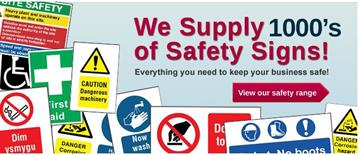About Us
Label Source as a company was formed in 1994 as a supplier of quality, cost-effective identification products, such as labels, signs, nameplates, tags and tapes.
Label Sources founders and staff have gained over 25 years experience in the industry of providing print solutions to overcome marking problems faced by customers.
Label Source is based in Cardiff and Pontypridd in South Wales and they supply to a wide selection of UK and International customers.



